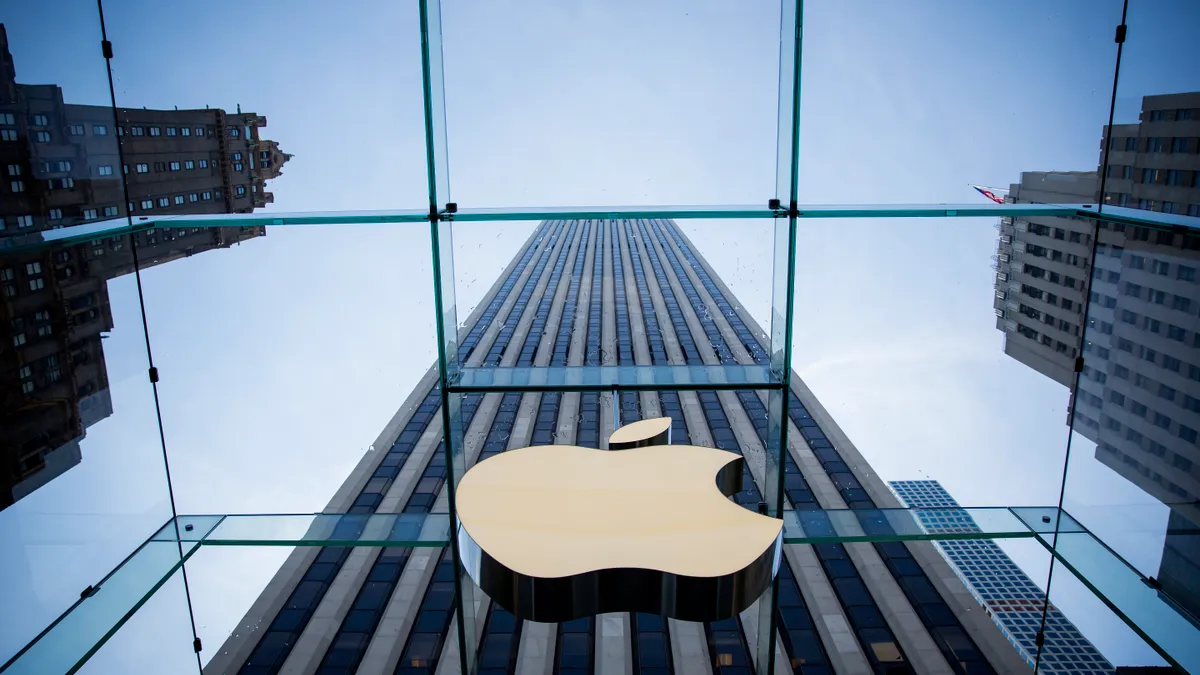Luca Maestri, senior vice president and CFO of Apple, touted the company’s record service revenue as sales fell for the second straight quarter. Apple’s service revenue was $20.9 billion, up 5.5% year-over-year, the company reported.
“The continued growth in services is the reflection of our ecosystem strength and positive momentum we are seeing across several key metrics,” Maestri said on a second-quarter earnings call Thursday. The company’s base of more than 2 billion active devices represents a “foundation for future expansion” of services offerings, he added.
Apple reported revenue of $94.8 billion for the quarter, down 3% year over year. The company, however, generated $51.3 billion in iPhone sales, “despite significant foreign exchange headwinds and a challenging macroeconomic environment,” chief executive Tim Cook said. iPad and Mac revenue did not fare as well, with revenue falling 13% and 31%, respectively.
Apple’s service revenue is generated from the App Store, Apple Pay and subscription services such as Apple TV+, Apple Music and iCloud. The company has 975 million paid subscriptions, up 150 million year-over-year, and nearly double the number of paid subscriptions it had three years ago, Maestri said.
Among Apple’s services offerings, growth areas include Apple Card, Apple Pay and cloud services.
“Users want to store more photos and videos and more content on their devices. so they adopt our cloud services and in general the model in the App Store around paid subscriptions continues to grow very strongly,” he said.
Apple’s growth in service revenue comes as the global smartphone market declined by 14% year-over-year and 7% quarter-over-quarter, representing 280.2 million unit shipments in the first quarter of 2023, according to Counterpoint Research, which also reported that Samsung replaced Apple as the top smartphone player in the first quarter of 2023.
“The smartphone market was also hit by some major brands supplying fewer new devices to a market struggling with high inventories at a time when consumers are choosing to renew less often, but with more durable smartphones when they do buy,” Harmeet Singh Walia, senior analyst at Counterpoint Research, said in a statement.
Overall, Apple expects foreign exchange to continue to be a headwind, said Maestri. Apple projects its June quarter year-over-year revenue growth will be similar to the March quarter, but that it will continue to face macroeconomic headwinds in areas such as digital advertising and mobile gaming.
As the company looks to India as a market opportunity — Apple opened its first retail stores in New Delhi and Mumbai last month — it’s also looking to diversify its production operations beyond China amid supply chain disruptions. The company is looking to build production facilities in India and Vietnam, The Wall Street Journal reported in December.
“We’ll continue to invest everywhere and we’ll continue to look for ways to optimize the supply chain based on what we learn each and every day and week and so forth, to ensure that we can deliver the best products and services for our customers,” said Cook.












